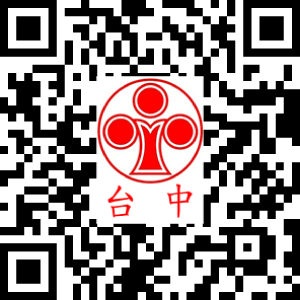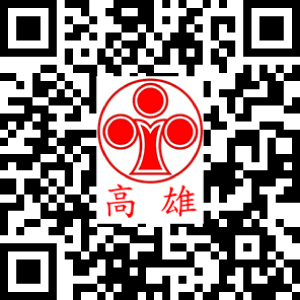
Introduction to the Amendments of the Taiwan Patent Examination Guidelines - For Divisional Invention Patent Applications
An amendment to the Patent Act (“the Act”) was promulgated on May 1, 2019 and implemented on November 1, 2019, wherein the provisions regarding division were amended and thus the relevant parts in the Patent Examination Guidelines (“the Guidelines”) have to be amended accordingly.
More Details
Introduction
An amendment to the Patent Act (“the Act”) was promulgated on May 1, 2019 and implemented on November 1, 2019, wherein the provisions regarding division were amended and thus the relevant parts in the Patent Examination Guidelines (“the Guidelines”) have to be amended accordingly. This essay only focuses on the amendments of the Guidelines for a divisional invention patent application and introduces them in detail below.
Comparison between the current and previous provisions regarding division
Please refer to the following table for a comprehensive comparison of the amendments:
| Act | Current provision | Previous provision |
| Art. 34 Para. 2 Subpara. 2 | A request for division shall be filed within any of the following time periods: 1. (omitted); or 2. within three months after the date on which an approval decision upon Primary Examination & Reexamination for the original patent application is served. | A request for division shall be filed within any of the following time periods: 1. (omitted); or 2. within thirty (30) days after the date on which an approval decision for the original patent application is served. |
| Art. 34 Para. 6 | For the divisional patent application filed in accordance with Subparagraph 2 of Paragraph 2, the inventions for the divisional application should be disclosed in the original specification or drawings but not be the same inventions as those in the claims granted upon Primary Examination and Reexamination. For the divisional patent application filed, the examination thereof that has been conducted before the original patent application is approved shall be resumed. | For the divisional patent application filed in accordance with Subparagraph 2 of Paragraph 2, the examination thereof that has been conducted before the original patent application is approved shall be resumed |
| Art. 34 Para. 7 | The granted specification, claims or drawings for the original patent application shall not be changed, and the original patent application shall be published based on the claim(s) and drawing(s) as originally approved. |
For more details concerning division for utility model and design patent applications, please refer to RED C. H. JEN, “Comparison of the provisions regarding filing a divisional application before and after amendment” (https://www.taie.com.tw/eng/p4-publications-detail.asp?article_code=03&article_classify_sn=64&sn=1357, accessed on 2019-12-25).
Amendments of the Guidelines
Based on the currently amended provisions as recited above, the Guidelines first define the term “the original patent application.” This term in the Guidelines does not exclusively refer to the first filed patent application (“the parent case”) which acquires the filing date and may claim one or more priorities. If the parent case is divided to have a divisional application (“the child case”) which is then further divided to have a re-divisional application (“the grandson case”), “the original patent application” of the grandson case refers to the child case rather than the parent case.
Additionally, the Guidelines define the term “the same inventions.” To determine whether a child case is the same as the parent case, these two cases each shall be considered a citation of one another for mutual comparison. That is, the child case needs to be compared with the parent case, and vice versa. Therefore, the parent and child cases will be deemed the same under the conditions of (1) being completely the same, (2) being substantially the same (i.e., the difference merely lies in the wording but can be known directly and unambiguously), and (3) the difference belongs to a technical feature which can be directly replaced in light of common general knowledge. However, the inventions should not be deemed the same when the differential technical features between the parent and child cases are in a generic and specific relationship.
If the child case is filed during the proceedings of Primary Examination and/or Reexamination and then deemed the same as the parent case, the Taiwan Intellectual Property Office (“the TIPO”) will issue an office action under Art. 31, Para. 2 of the Act (the first-to-file principle):
“If the filing date and the priority date referred to in the preceding paragraph are the same … [and] [i]f the said patent applications are filed by the same applicant, the applicant shall be notified to select one patent application within a specified time period; failure to make a selection within the time period shall result in the rejection of all such patent applications.”
However, if the child case is filed after an approval decision for the parent case upon Primary Examination and/or Reexamination was served and then deemed the same as the parent case, the TIPO will notify the applicant under Art. 34, Para. 6 of the Act as noted above instead of the first-to-file principle. In this case, please note that even if the applicant does not pay the certificate fee and the 1st annuity for the parent case, the TIPO will still issue an office action to inform the fact of double patenting for the child case.
The TIPO explains that allowing applicants to file a divisional application after granting the original application is to avoid the condition that the applicant does not request for division in time as the examination proceedings of the original application were terminated due to the approval decision served to the applicant. If the same inventions recited in the original application are repeatedly claimed in a divisional application, the examination proceedings of the divisional application would be delayed. This is why Art. 34, para. 6 of the Act stipulates that the inventions asserted in the child case cannot be the same as those in the parent case granted upon Primary Examination and Reexamination.
Example
If there are claims 1-5 in the parent case at the time of filing, which were all rejected upon Primary Examination, and the applicant then requested for Reexamination with only the original claims 1-3 (i.e., deleting claims 4-5), which have all been granted and thus served an approval decision to the applicant, in case the applicant intends to file a child case, the applicant can only assert the original claims 4-5. The applicant will receive an office action under Art. 34, Para. 6 of the Act if the original claims 1-3 are included in the claim set.
Conclusion
After the amendments of the Act as described above, the TIPO broadens the formal requirements for requests for division. That is, after receiving an approval decision for the original application, there are certainly more opportunities - even upon Re-examination - as well as more time - up to three months - for the applicant to consider filing a divisional application. The amendments of the Act leave the applicant more options. However, the TIPO sets forth the substantial requirement for requesting division - not being the same inventions - at the same time and applies strict criteria. Accordingly, the applicant has to be aware of and follow all of these requirements.







